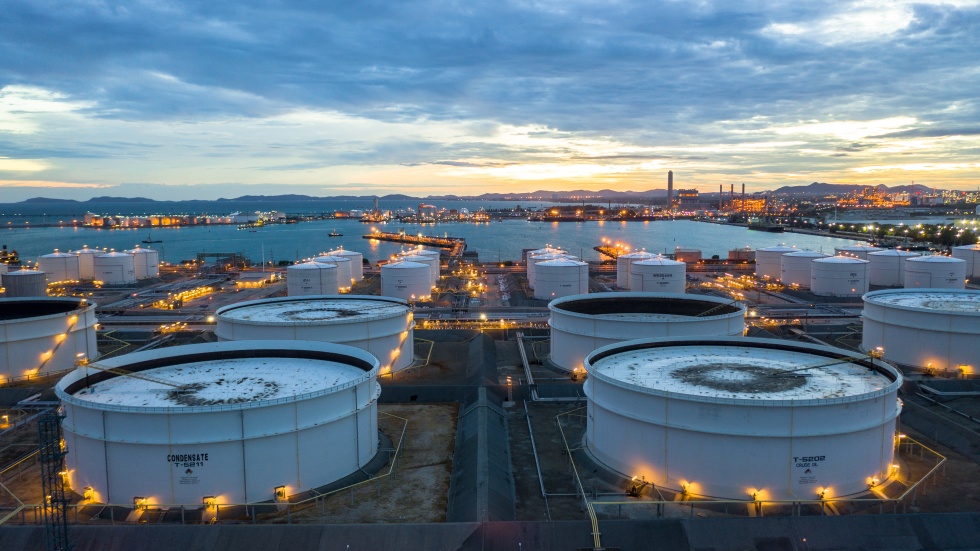India's Strategic Response to Low Crude Oil Imports
Explore India's energy landscape as crude oil imports hit a 12-month low. Insights on trends, government strategies, and global market dynamics shaping the nation's energy future.

India, the world's third-largest crude oil importer, saw a notable shift in its energy landscape as crude oil imports hit a 12-month low of 17.80 million tons in September. This decline was primarily attributed to reduced demand during the fall refinery maintenance period and lower consumption during the monsoon season.
Decline in Crude Oil Imports
According to the Petroleum Planning and Analysis Cell (PPAC), crude oil imports declined by 5% month-on-month but increased by 6% on an annual basis. Vortexa reported that India purchased approximately 4.196 million barrels per day (mb/d) of crude oil, the lowest level in FY24.
Impact on Global Imports
Russia continued to play a significant role in India's crude oil imports, accounting for 38% of the total. However, factors such as rising prices of medium sour grades, voluntary production cuts by major exporters such as Saudi Arabia and Russia, and reduced discounts on Russian crude have impacted India's import dynamics.
Russia's Dominance and Changing Discounts
In August 2023, Russia's share of India's crude oil imports remained strong at around 38%. Despite a slight decline from previous months, this figure was significantly higher than pre-Ukraine invasion levels. However, CMIE noted a decline in the discount of Russian crude to India, which it attributed to Russia's commitment to reduce oil exports and a decrease in the availability of Russian oil on spot markets.
Market Trends and Outlook
India's crude oil imports are expected to increase in October, in line with the festival season and improved domestic demand. The impact of changing discounts, geopolitical factors, and global oil market trends continues to shape India's energy landscape. As India navigates these changes, companies and industries will need to adapt to emerging trends in the oil industry.

India's Crude Oil Prices: A Global Overview
The global crude oil market is driven by a myriad of factors, with supply and demand dynamics playing a key role. Fluctuations in crude oil prices are influenced by global consumption of this vital resource, which impacts countries' GDP. When supply falls short of demand, prices rise and vice versa, creating a complex environment shaped by both internal and external factors.
Crude Oil Rate in India Today: A Snapshot
India's crude oil imports, a crucial component in the nation's energy portfolio, have witnessed a 12-month low, standing at 17.80 million tonnes in September. The Petroleum Planning and Analysis Cell (PPAC) reports a 5% month-on-month decline, yet a 6% increase annually. Vortexa notes that India purchased approximately 4.196 million barrels per day (mb/d), the lowest in FY24. Russia remains a dominant supplier, accounting for 38% of total imports.
Unveiling Crude Oil Prices: Historical Trends
Examining historical prices provides valuable insights into the volatility of crude oil markets. Over the past months, prices have experienced notable fluctuations:
- October '22: ₹7,437.13
- December '22: ₹6,429.95
- May '23: ₹6,763.43
- September '23: ₹7,542.00
- December '23: ₹6,114.00
Daily Price Movements: Last 10 Days
Understanding recent trends is crucial for market participants. In the last 10 days, prices have demonstrated nuanced changes:
- January 24, 2024: ₹6,199 (-0.29%)
- January 23, 2024: ₹6,217 (0.56%)
- January 22, 2024: ₹6,182 (1.12%)
- January 21, 2024: ₹6,113 (0.02%)
- January 20, 2024: ₹6,112 (-1.59%)
MCX Price of Crude Oil: An Additional Dimension
The MCX Price of crude oil in India, reported at Rs.5,857 on May 5, 2023, reflects the impact of global price changes. Understanding the MCX Price is essential for stakeholders navigating the dynamic energy landscape.
Decoding Crude Oil Classifications and Types
Crude oil is not a monolithic entity but is classified into four categories, each with distinct characteristics:
- Class A: High fluidity, strong scent, easily combustible.
- Class B: Greasy, waxy, less hazardous than Class A.
- Class C: Viscous, sticky, less penetrative than Class A and B.
- Class D: Comparatively non-toxic, dark brown or black.
Moreover, different types of crude oil, such as Brent, WTI, Dubai, Bonny Light, and more, exhibit varying properties, impacting their utility and refining challenges.
Factors Influencing Crude Oil Prices Globally
Understanding the dynamics of crude oil prices involves assessing several key factors:
- Quality: Higher-quality oils command higher prices.
- Demand: Global demand, especially from major consumers like the USA, Europe, and China, plays a pivotal role.
- Supply: OPEC decisions and global supply volumes significantly impact prices.
- Derivative Trading: Futures and options trading influences crude oil prices, with speculators and hedgers shaping market dynamics.
Investing in India's Crude Oil: A Brief Guide
For those looking to invest in crude oil, various avenues exist:
- Derivatives Trading: Open a derivatives account through a broker and engage in futures trading on platforms like MCX.
- Exchange Traded Funds (ETFs): Invest in ETFs focused on companies involved in crude oil extraction, refining, and production.
- Equity Investments: Directly invest in oil companies listed on stock exchanges like NSE or BSE.
Navigating the India's Crude Oil Landscape
As India's crude oil imports experience shifts, staying informed about global trends, historical data, and investment opportunities is paramount. The intricate interplay of factors influencing crude oil prices necessitates a nuanced approach for businesses, investors, and policymakers alike. In this dynamic energy landscape, staying updated with market trends and leveraging diverse investment options becomes imperative for sustainable decision-making.
For more in-depth insights and to explore opportunities in the ever-evolving crude oil market, connect with Export Portal – Your Gateway to Global Trade.






Comments 0